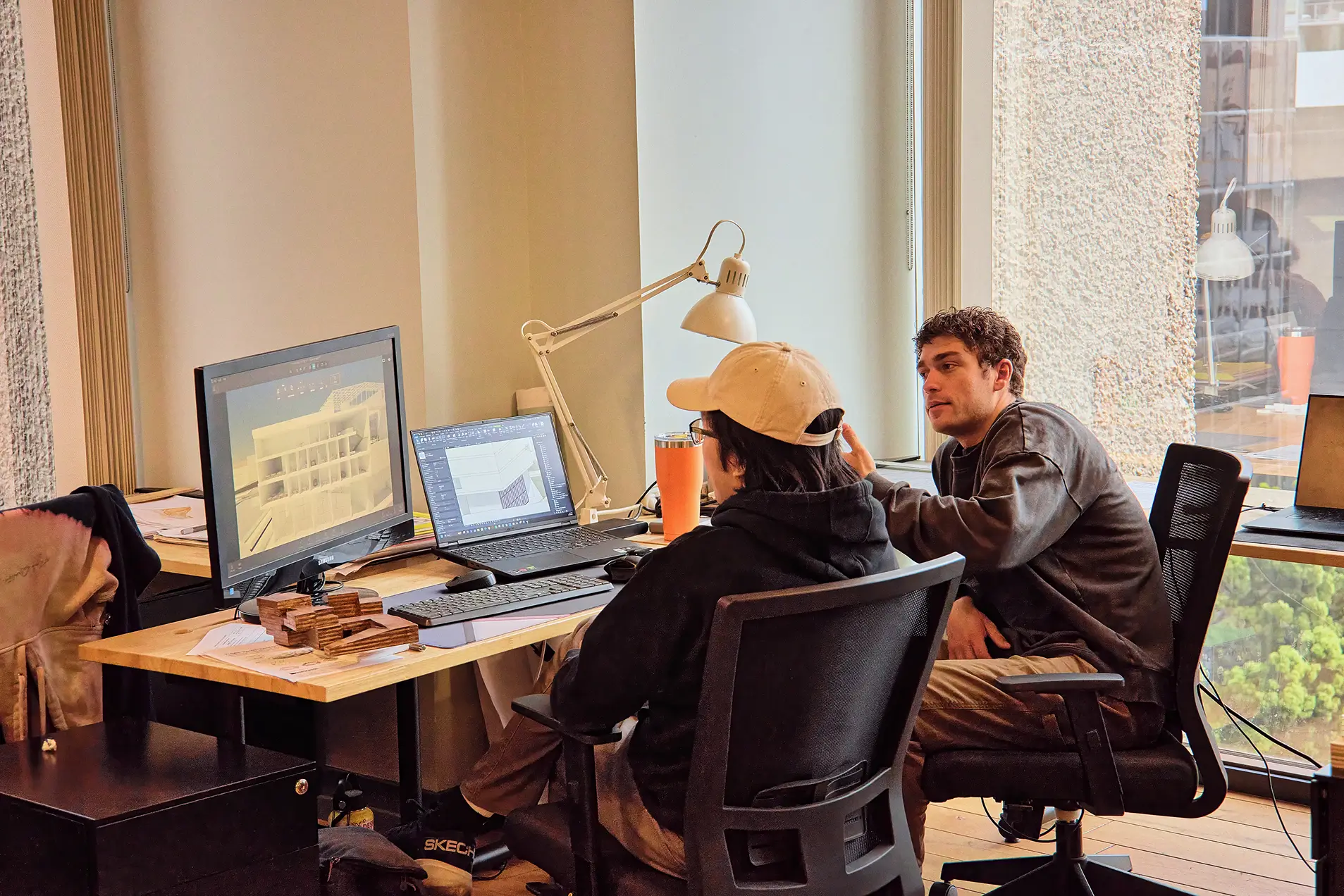Becoming an interior designer is a very popular career path at the moment, and it’s easy to see why. If you have a passion for design and bringing out the beauty of a space, interior designing is the perfect career to flex your creative muscle and artistic ability. But how do you become a professional interior designer?
It isn’t as simple as waking up one day and deciding that interior designing is you’re going to do. You have to get some training or work experience, no matter what route you take to become an interior designer, but whether you choose the traditional route or option B or C, you can still achieve your dream interior design career.
In this post, we’ll take a look at the many ways how to become an interior designer. But first, let’s get something out of the way…
What is an Interior Designer?
An interior designer is a person who works on architecture and interior space. The interior designer develops the plans, researches, coordinates, and manages the projects. They focus on space planning, all the while creating cohesive and aesthetically pleasing design ideas for homes and businesses. Earning a Bachelor of Interior Architecture & Design can provide a strong foundation for pursuing a career in this field. As an interior designer, you can focus on specializing in a particular design field, whether that be residential interior design, commercial, environmental design, or much more.
What Does an Interior Designer Do?
If you’re wondering how to become an interior designer, it’s important to first understand what an interior designer does. An interior designer is in charge of a lot of design elements and responsibilities which include:
- Listening to the client’s needs, goals, space, interest, & budget for the desired project
- Creates a sketched design plan of the layout keeping in mind how many people will be using the space
- Uses computer software to finalize design plans including the custom wallpaper
- Calculates estimated cost for projects
- Creates a timeline for the project and project completion
- Face-to-face meetings with clients to ensure the satisfaction of a project
- Seeks out any potential clients & makes offers on new projects
Interior Designers vs Interior Decorators
Wrong. In fact, an interior decorator is quite different from an interior designer. The main difference is education: To become an interior designer, you will most likely need to earn an associate or bachelor’s degree from an accredited institution or interior design school before you can begin work in the interior design field.
Meanwhile, anyone can become an interior decorator, no matter what education, interior decorator school you attended, or training you have. If you simply just enjoy playing with fabrics and colors, you can print out some business cards and declare yourself an interior decorator. There are no licensing requirements involved for interior decorating.
Also, while an interior decorator focuses mainly on styling and aesthetics, the Interior Architecture Bachelor degree goes much deeper—equipping students to design and shape complete living and working environments with both function and structure in mind. These may be homes and apartments, corporate offices, theaters, and more. There are also different specialties an interior designer may have. It takes creativity, the ability to work independently and with contractors, a good eye and ear to listen to your client’s needs then bring them to life. You’ll oversee an interior design project from start to finish.
While it isn’t necessarily a bad thing that it takes less work to become an interior decorator, it does mean that becoming an interior designer requires more dedication, education, and hands-on experience. But what kind of training do you need when becoming an interior designer?
Go To School and Earn an Associate or Bachelor’s Degree in Interior Design
Interior designers must be creative, technically proficient, and business-savvy in order to be truly successful. Lucky for you, there are several options to get your interior design education, from the associate level all the way to a doctorate. If you’re wondering how to become an interior designer, it all begins with choosing the right education path.
The most traditional way to learn the skills you will need is through a bachelor’s degree program at a university or college. But if you’re unsure if interior design is the career path you want to take, or aren’t ready to fully commit to a bachelor’s degree program, an associate’s degree is a good way to start and get your foot in the door.
If you are a creative person or have some sort of artistic ability, and someone who is particularly intrigued by interior design, an associate’s degree program might be the perfect way to learn the fundamentals. From here, you can continue your education if you decide an interior design career is the career path you want to take. In most cases, you can later transfer your earned credits into a bachelor’s degree program.
You can go in several different directions with an associate’s degree program. If you want to start working in the professional world as soon as possible, you should consider an Associate of Applied Science degree as an assistant interior designer. But if you find that you want to continue your education in interior design and earn your bachelor’s degree, you should go for an Associate of Arts.
Don’t fret if you aren’t sure right away – your first year will focus on the fundamentals of design and the basic hand drawing and digital drafting skills you’ll need. Meanwhile, year two shifts into more specialized topics like color theory and architectural lighting, as well as introductory marketing and business topics.
Earning a bachelor’s degree will take things a step further and make you a more well-rounded interior designer. You’ll learn more about the aesthetic, technical, and business skills you need to thrive in the field. A bachelor’s degree program will build on the skills you would learn in an associate’s program.
You’ll learn everything from the theory and history of interior design to how to draw sketches, build 3D models and use computer-aided design (CAD) software. You’ll gain vital knowledge on building materials, construction practices, and furniture technology to help your clients choose the best materials and furnishings for their space.
Most interior design programs will teach you the different skills needed for spaces other than just residential, including office spaces, retail, and large buildings. You’ll learn to consider things like traffic flow, lighting design, acoustics, and the social and psychological needs of a given space and its occupants.
Beyond the skills you need on the job, you’ll also master the business side of things so you can learn how to become a success. This is especially helpful if you want to have your own interior design business, rather than work at a large design firm. You’ll need these skills to keep the lights on.
Many degree programs will also offer a variety of concentrations, which will allow you to hone your skills on one specific area, such as bathroom design or environmentally sustainable materials. This will make you an expert in a specific skillset, which could make you attractive to clients looking for design help in that specific area.
Beyond a bachelor’s degree program, you can also take things a step further and earn a master’s or doctorate in interior design. Candidates for a master’s degree most often have worked in the industry for a couple of years and have identified an area of interior design that suits their skills the best, or that they are most interested in. A master’s interior design program helps them improve their knowledge on that topic and positions them for a higher role within their company, or to start their own interior design firm.
Doctoral programs are generally for those who are ready to move on to teaching, consulting, or conducting independent research on design theory.
If the traditional learning path isn’t for you, many renowned interior design schools also offer online learning opportunities. An online interior design school will be the perfect option for anyone who wants to continue their education while working.
The very best degree programs will also include internships that will help you to build your professional portfolio, which is just as important to have as your degree. But no matter which degree program you choose, you should make sure you choose an accredited institution.
Upon Graduation, Pass the National Council for Interior Design Qualification Exam and Get an Interior Design License (If Necessary)
While not all states require interior designers to be licensed, you need to make sure, because several states will prohibit unlicensed designers from doing any interior design work. Some other states allow both to work, but will only allow licensed professionals to use the “interior designer” title.
To become a licensed interior designer, you will need to pass the National Council for Interior Design Qualification (NCIDQ) exam. This is a state-approved exam that you must qualify for with a combination of interior design education and experience, typically a minimum of a bachelor’s degree and two years of on-the-job training.
As we mentioned, the requirements do vary by state, so make sure to look into your state requirements. For example, California residents must take the California Council for Interior Design Certification (CCIDC) exam.
There are also some voluntary certifications you can get if you have a business that focuses on one specialty of interior design. These are commonly available through professional and trade associations and are a good way to make your business look better with a certified seal of approval from a trusted organization.
Build a Strong Portfolio
The best way to make yourself attractive to clients is by building a strong portfolio. In whichever interior design education program you choose, part of the curriculum should also focus on creating a solid portfolio to showcase your skills and design ideas. You’ll want to take high-quality photographs of all of your work and package them attractively on your website and in a digital presentation.
This will show your clients what you’re capable of and present you as a well-organized professional. You should also include some examples of projects that you can show from sketch to completion to give them insight into your thought and work process. You should also always modify your portfolio to highlight projects that apply to the one you are trying to attain.
Digitally is the main way to showcase your portfolio, but don’t be afraid to create an old-fashioned flipbook as well. Clients love to flip through photo books to see your work and it may leave more of a lasting impact to actually have something in their hands.
Internships are a great way to build a portfolio and gain hands-on experience before you start work as a professional. If you’re exploring how to become an interior designer, don’t hesitate to include standout schoolwork—top-quality student projects can also make a strong first impression. You have to be able to show what you have to get yourself started.
Take Pro Bono Work
This might seem surprising, but getting your foot in the door often means gaining experience first—even if it’s unpaid. Volunteering your interior design skills for friends, family, or local nonprofits is a great way to build your portfolio and boost your confidence. Plus, it helps you refine your process and prepare for real-world projects. These early experiences can be incredibly valuable when you’re figuring out how to get a job in architecture and design.
Find Yourself an Interior Design Job, or Start Working For Yourself
Having a career in interior design is a highly competitive field. According to the Bureau of Labor Statistics, there is a projected growth of 4 percent between 2014 and 2024.
ver mas
Have more questions on how to become an interior designer? Or perhaps you’re ready to start earning a bachelor’s degree in interior architecture & design? Contact the NewSchool of Architecture & Design Enrollment Team today!









 619-684-8800
619-684-8800

